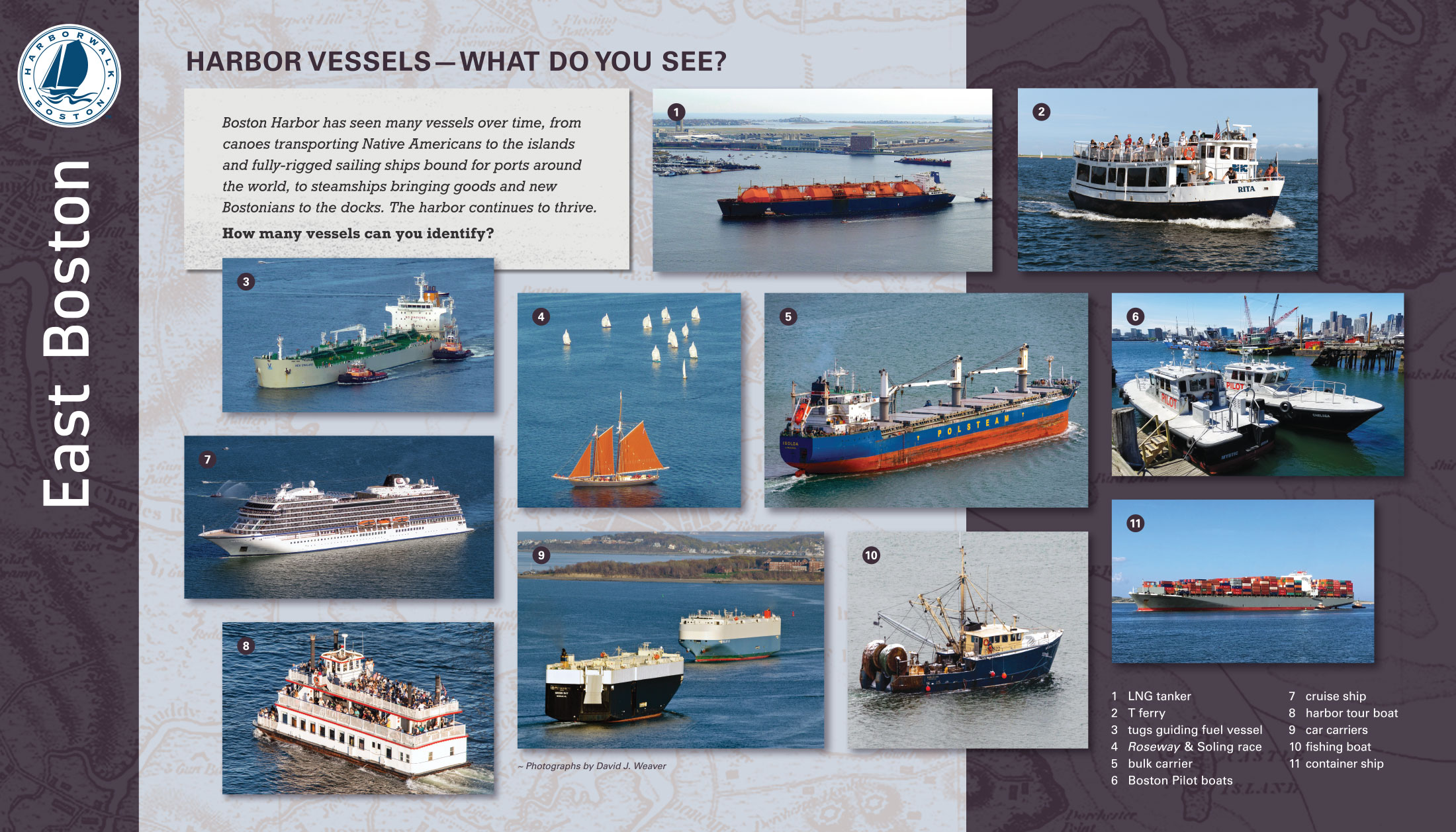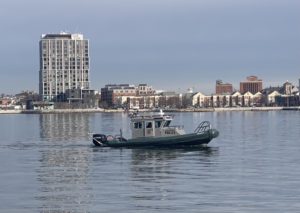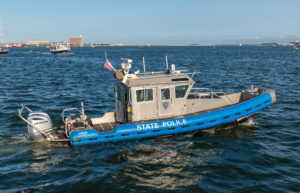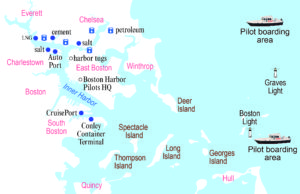Harbor Vessels–What Do You See?
in East Boston

Photographs by David J. Weaver
Boston Harbor has seen many vessels over time, from canoes transporting Native Americans to the islands and fully-rigged sailing ships bound for ports around the world, to steamships bringing goods and new Bostonians to the docks. The harbor continues to thrive.
How many vessels can you identify?
Sign Location

More …
In a typical year:
- 200,000+ containers, carrying more than 2 million metric tons of cargo, are offloaded from container ships at Conley Container Terminal, South Boston
- 150 cruise ships carry around 400,000 passengers from Black Falcon Cruise Terminal, South Boston
- some 50,000 vehicles arrive on car carriers to the Autoport in Charlestown
- 28 LNG tanker deliveries bring 66.5 cubic feet of liquefied natural gas (LNG) to Everett Marine Terminal; enough to heat 840,000 homes for a year
- 93,000 metric tons of dry cement was brought in on bulk carriers, enough to fill more than 31,000 concrete mixer trucks, which combine cement with water and sand or gravel.
- 80% of all cargo coming into Boston Harbor was petro products brought in on barges and fuel vessels, including all the jet fuel for Logan Airport. Most of the fuel depots are along Chelsea River.
Harbor Pilots have extensive experience as ship captains and detailed knowledge of the local waterways, channels, currents, and vessel traffic, so they can safely guide ships through their harbor. Federal and state regulations require that any vessel over 350 tons must have a harbor pilot on board in order to sail into a commercial harbor like Boston.
To be commissioned as a Harbor Pilot in Massachusetts, the captain must have a “Master Unlimited License,” certifying that s/he can sail any size vessel. The license usually takes someone a decade to earn. In Boston, when a captain applies and is selected as a pilot candidate, s/he begins a year as an unpaid apprentice, shadowing the eight senior pilots to gain experience. Then the apprentice spends an additional year piloting the smaller of the large vessels that come into Boston Harbor.
Nancy Wright, November 2018
Boston’s eight Harbor Pilots guide about 900 ships a year into the port. By law, any vessel over 350 gross tons that seeks to enter a commercial harbor must have a pilot on board. Large vessels usually anchor about 10 miles off shore and request harbor pilot assistance. Once the pilot boat comes alongside the ship, the pilot transfers onto the ship by climbing up a rope ladder dangling off its side. A Harbor Pilot’s job can be treacherous and unpredictable. Boston Harbor Pilots operate 24 hours a day, 7 days a week, 365 days a year from their office in the East Boston Shipyard.
Nancy Wright, November 2018 & lnw August 2019
The practice of employing local navigation experts as harbor pilots dates back to Ancient Greece and Roman times. It was a long-standing practice in Europe in the centuries that followed. Information about harbor pilots during the Colonial Era is sparse. It appears to have been informal with ship owners tapping into local men known for their knowledge of the harbor. Once Boston Light was built in 1716, the keeper of the light served as the principal pilot for the harbor. The Boston Harbor Pilot Association, who now handle all harbor pilot duties, was founded in 1783.
lnw, November 2018/February 2019
For an NPR story https://www.npr.org/2012/03/21/149091141/harbor-pilots-reap-high-rewards-for-dangerous-job
more about Boston Harbor Pilots http://www.bostonpilots.com/welcome-1.html
Built in Essex, MA in 1925, the Roseway is easily recognized by her dark red sails. Though the schooner was used occasionally to fish, Roseway was specifically built to race in the annual competitions against the Canadian fishing fleet. It was on this basis that the schooner was designated a National Historic Landmark in 1997.
In 1941, the Boston Pilots Association bought the schooner to serve as a pilot boat for Boston Harbor. She filled that role throughout World War II and up until 1973. After that, Roseway had several owners until in 2002, she was donated to World Ocean School. After a two-year restoration, she began her life at the heart of the non-profit educational organization empowering teens. Roseway spends her summers based in Boston and winters in St. Croix. And anyone who wants to experience the schooner’s racing prowess, can sail with her crew during the yearly Labor Day Gloucester Schooner Race.
Large vessels cannot maneuver in small spaces, like Boston’s inner harbor. Tug boats are an essential feature of the harbor, available 24 hours a day to assist commercial ships within the harbor and help them dock. Boston Towing and Transportation is the largest tug boat company in Boston. It employs 33 crew members, 9 of them USCG-certified “masters of towing vessels.” Two or three tug boats meet container ships in the outer harbor and travel alongside to Conley Container Terminal. For vessels coming to dock along the Mystic or Chelsea rivers, tugs join them in the inner harbor just off Fish Pier.
lnw October 2019, with assistance from Mike Power, president of Boston Towing and Transportation
Federal, state, and city agencies patrol Boston Harbor and beyond.




Early Colonial laws established public right of access along tidelands to protect citizens’ rights to fish, hunt, and navigate at sea and along the shorefront. These laws go back even further: They stem from Roman law, which was incorporated into English law and brought over to Massachusetts by English
settlers. Then, in the 1640s, Massachusetts Bay Colony passed laws permitting private docks in the intertidal area (between low and high tide) as long as public access was retained. Almost all of Boston’s waterfront is filled land that was once the intertidal area. This, together with the centuries-old legal right of access, served as the underpinnings for the 1978 CZM regulations.
Resources
- No additional resources at this time

